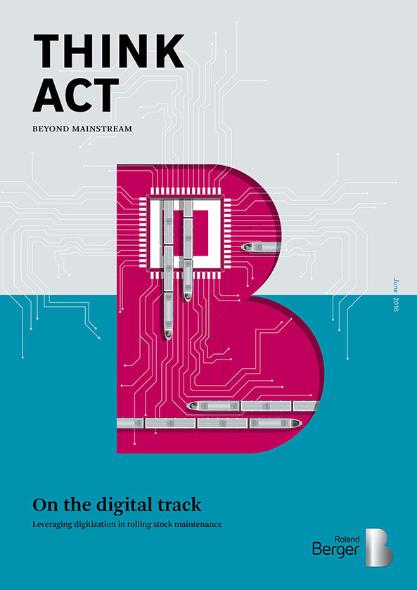On the digital track
![{[downloads[language].preview]}](https://www.rolandberger.com/publications/publication_image/roland_berger_tab_on_the_digital_track_2_download_preview.jpg)
Leveraging digitization in rolling stock maintenance


European railways have undergone considerable change since widespread reforms in the 1990s. Maintenance, however, still represents a major cost factor for rail companies – regardless if they’re public, private, passenger or cargo operators. Over the past 60 years, railways have continuously lost market share to the roads. The development of self-driving cars and trucks will only increase competition for both passenger and cargo traffic.
In this publication, we delve into the challenges facing rail operators and the opportunity to sink rolling stock maintenance costs by embracing digital changes to the industry. “Digitization is a good way to increase efficiency,” says Roland Berger partner and rail expert Andreas Schwilling. “Rail operators can use it to cut their maintenance costs by around 20% through greater interval flexibility and less downtime.” Backing up our independent research, we present the results of an exclusive survey of rail industry executives. Although many of our respondents feel they have maintenance costs under control, our research suggests that such assessments are overly optimistic.

Drawing on our project experience, we continue by presenting six recommendations to make the most out of the digitization of rolling stock maintenance. This applies to companies operating trains as well as OEMs. First, they should share data. The bigger the data pool, the better the results from intelligent data analytics. Second, if there are blind spots in the information, investing in additional sensors is vital. Third, it is also important not to focus on rail maintenance alone. Only a holistic view will make it possible to optimize the process. Fourth, we suggest working with outside data analytics experts including start-ups to gain their know-how. Fifth, crowd platforms, hackathons and other innovative thinking can also make digitization most effective. Lastly, focusing on the classic elements of optimization while integrating your digitization efforts into the mix will be essential. “What will be decisive, however, is that digitization is both understood and implemented properly,” says rail expert Schwilling.




![{[downloads[language].preview]}](https://www.rolandberger.com/publications/publication_image/roland_berger_tab_on_the_digital_track_2_download_preview.jpg)
Leveraging digitization in rolling stock maintenance